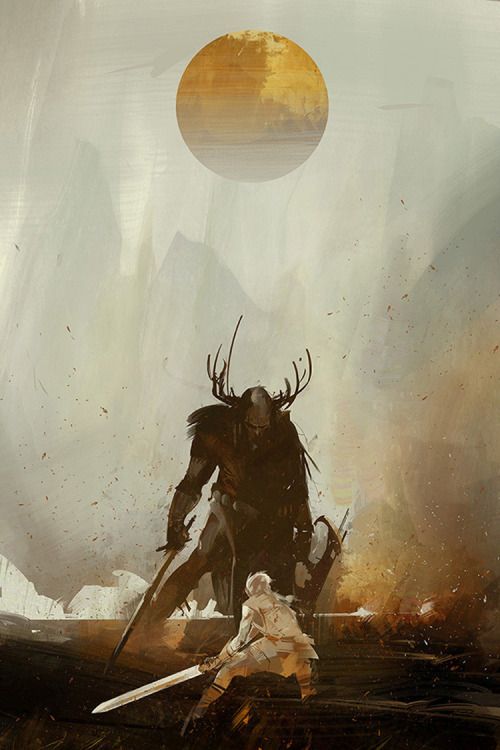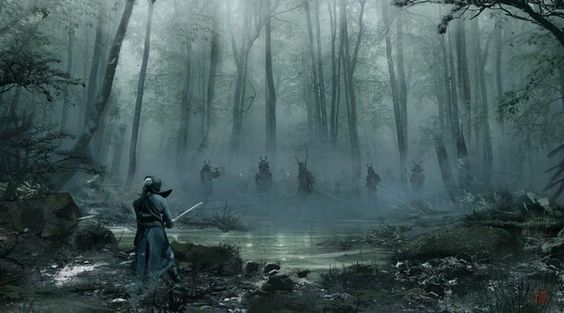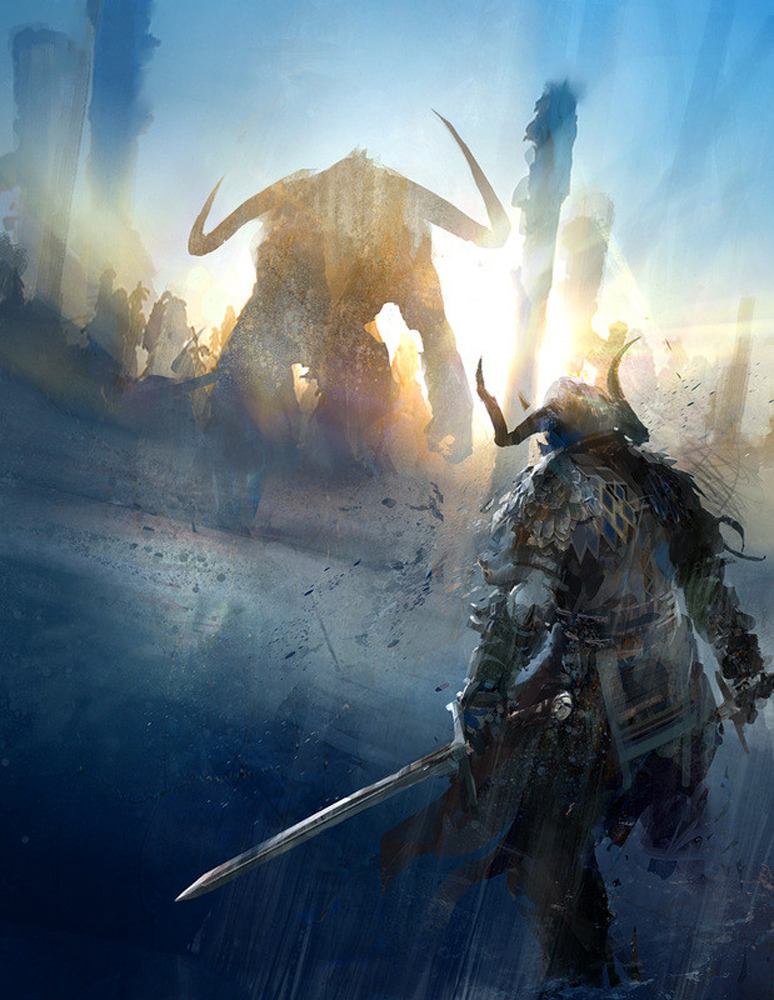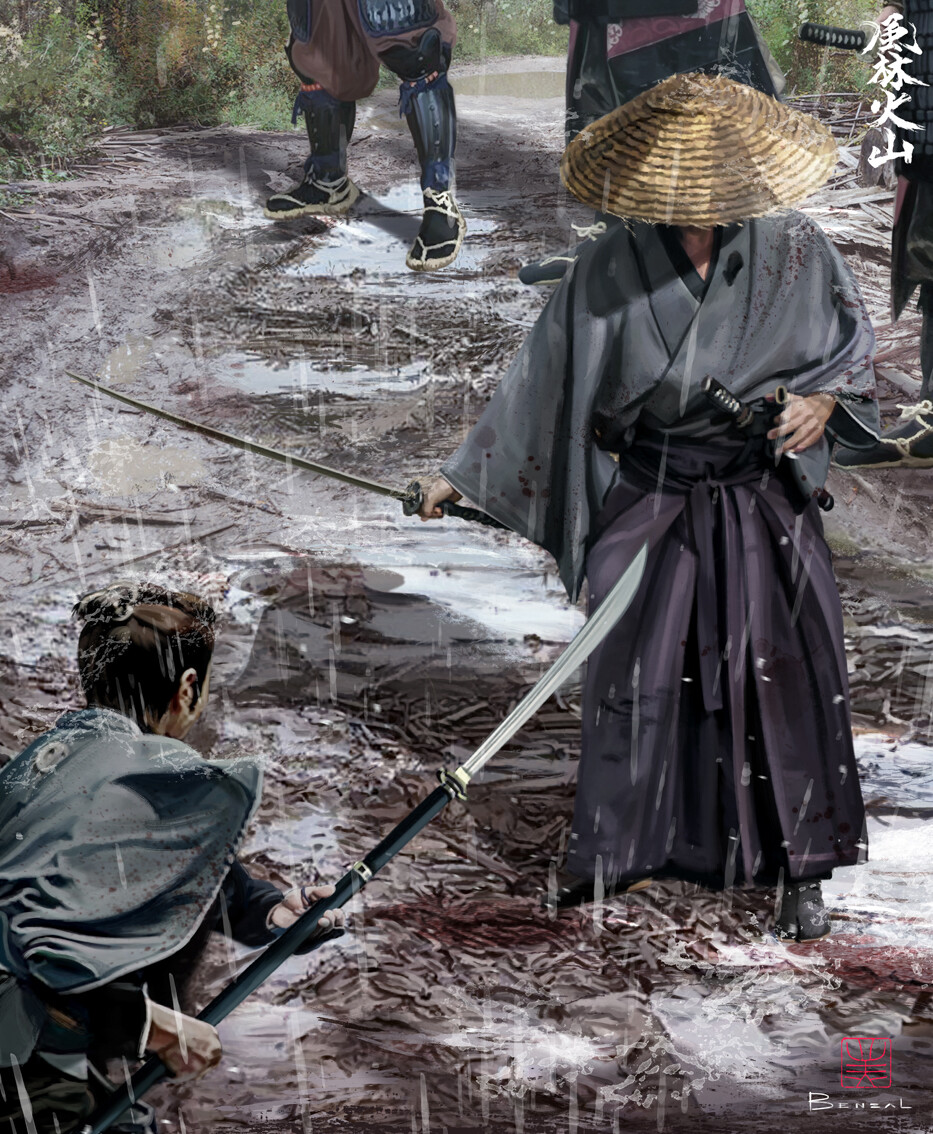
Fighter
| Level | Proficiency Bonus | Features | Maneuvers Known | Superiority Dice |
|---|---|---|---|---|
| 1st | +2 | Combat Superiority, Fighting Style, Second Wind | 3 | 2 |
| 2nd | +2 | Action Surge | 3 | 2 |
| 3rd | +2 | Martial Archetype | 3 | 3 |
| 4th | +2 | Ability Score Improvement | 3 | 3 |
| 5th | +3 | Extra Attack | 3 | 3 |
| 6th | +3 | Heroism, Ability Score Improvement | 3 | 3 |
| 7th | +3 | Martial Archetype feature | 5 | 4 |
| 8th | +3 | Ability Score Improvement | 5 | 4 |
| 9th | +4 | Indomitable | 5 | 4 |
| 10th | +4 | Martial Archetype feature | 7 | 4 |
| 11th | +4 | Extra Attack (2) | 7 | 4 |
| 12th | +4 | Ability Score Improvement | 7 | 4 |
| 13th | +5 | Indomitable (Two Uses) | 7 | 4 |
| 14th | +5 | Ability Score Improvement | 7 | 4 |
| 15th | +5 | Martial Archetype Improvement | 9 | 5 |
| 16th | +5 | Ability Score Improvement | 9 | 5 |
| 17th | +6 | Action Surge (Two Uses), Extra Attack (3) | 9 | 5 |
| 18th | +6 | Martial Archetype Feature | 9 | 5 |
| 19th | +6 | Ability Score Improvement | 9 | 5 |
| 20th | +6 | Indomitable (Three Uses), Legendary Hero | 9 | 5 |
Revised Fighter
This revision is based on the ideas presented in the playtest for D&D Next/ 5e, along with a few changes to make these martial heroes stand out. Specifically, Indomitable has become more potent, the third extra attack has been moved to 17th level to be in line with cantrips, and combat superiority has become a core feature of the class. Additionally, Fighter has a Capstone now.
It should be noted that this provides a measure of potency to Fighter, and while it does not bring it up to par with full casting classes or smite-based multiclassing, it is something to be considered before just automatically approving this homebrew for your campaign. As always, read the whole thing before using!
Combat Superiority
At 1st level, you learn maneuvers that are fueled by special dice called superiority dice.
Maneuvers. You learn three maneuvers of your choice, which are listed under "Maneuvers" below. Many maneuvers enhance an attack in some way. You can use only one maneuver per attack. You learn two additional maneuvers of your choice at 7th, 10th, and 15th level.
Superiority Dice. You have two superiority dice, which are d6s. A superiority die is expended when you use it. You regain all of your expended superiority dice when you finish a short or long rest. You gain another superiority at 3rd level, at 7th level and one more at 15th level.
Saving Throws. Some of your maneuvers require your target to make a saving throw to resist the maneuver's effects. The saving throw DC is calculated as follows:
Maneuver save DC = 8 + your proficiency bonus + your Strength or Dexterity modifier (your choice)
Fighting Style
You adopt a particular style of fighting as your specialty. Choose one of the options available to Fighters. You can't take the same Fighting Style option more than once, even if you get to choose again.
Second Wind
You have a limited well of stamina that you can draw on to protect yourself from harm. On your turn, you can use a bonus action to regain hit points equal to 1d10 + your fighter level.
Once you use this feature, you must finish a short or long rest before you can use it again.
Action Surge
Starting at 2nd level, you can push yourself beyond your normal limits for a moment. On your turn, you can take one additional action.
Once you use this feature, you must finish a short or long rest before you can use it again. Starting at 17th level, you can use it twice before a rest, but only once on the same turn.
Ability Score Improvement
When you reach 4th level, you can increase one ability score of your choice by 2, or you can increase two ability scores of your choice by 1. As normal, you can't increase an ability score above 20 using this feature.
If your DM allows the use of feats, you may instead take a feat.
Extra Attack
Beginning at 5th level, you can attack twice, instead of once, whenever you take the Attack action on your turn.
The number of attacks increases to three when you reach 11th level in this class and to four when you reach 17th level in this class.
Heroism
At 6th level, any time you are forced to make a Wisdom saving throw to avoid being frightened or charmed, you can make a Constitution saving throw instead. Fighters are first in line to charge the most terrifying of foes, and many have hardened their resolve.
Ability Score Improvement
When you reach 6th level, you can increase one ability score of your choice by 2, or you can increase two ability scores of your choice by 1. As normal, you can't increase an ability score above 20 using this feature.
If your DM allows the use of feats, you may instead take a feat.
Martial Archetype feature
At 7th level, you gain a feature granted by your Martial Archetype.
Ability Score Improvement
When you reach 8th level, you can increase one ability score of your choice by 2, or you can increase two ability scores of your choice by 1. As normal, you can't increase an ability score above 20 using this feature.
If your DM allows the use of feats, you may instead take a feat.
Indomitable
Beginning at 9th level, if you fail a saving throw, you can choose to succeed instead, and you can't use this feature again until you finish a long rest. This feature is intentionally similar to Legendary Resistance. If you use this feature on a death saving throw, it counts as rolling a 15 on the d20.
You can use this feature twice between long rests starting at 13th level and three times between long rests starting at 17th level.
Martial Archetype feature
At 10th level, you gain a feature granted by your Martial Archetype.
Extra Attack (2)
At 11th level, you can attack three times whenever you take the Attack action on your turn.
Ability Score Improvement
When you reach 12th level, you can increase one ability score of your choice by 2, or you can increase two ability scores of your choice by 1. As normal, you can't increase an ability score above 20 using this feature.
If your DM allows the use of feats, you may instead take a feat.
Indomitable (two uses)
At 13th level, you can use Indomitable two times between long rests.
Ability Score Improvement
When you reach 14th level, you can increase one ability score of your choice by 2, or you can increase two ability scores of your choice by 1. As normal, you can't increase an ability score above 20 using this feature.
If your DM allows the use of feats, you may instead take a feat.
Martial Archetype feature
At 15th level, you gain a feature granted by your Martial Archetype.
Ability Score Improvement
When you reach 16th level, you can increase one ability score of your choice by 2, or you can increase two ability scores of your choice by 1. As normal, you can't increase an ability score above 20 using this feature.
If your DM allows the use of feats, you may instead take a feat.
Action Surge (two uses)
At 17th level, you can use Action Surge twice before a rest, but only once on the same turn.
Extra Attack (3)
At 17th level, you can attack four times whenever you take the Attack action on your turn.
Martial Archetype feature
At 18th level, you gain a feature granted by your Martial Archetype.
Ability Score Improvement
When you reach 19th level, you can increase one ability score of your choice by 2, or you can increase two ability scores of your choice by 1. As normal, you can't increase an ability score above 20 using this feature.
If your DM allows the use of feats, you may instead take a feat.
Indomitable (three uses)
At 20th level, you can use Indomitable three times between long rests.
Legendary Hero
When you reach 20th level, lesser foes no longer bother you - Any time you receive damage from any source that is less than Your Constiution score, the damage is reduced to 1. This is not resistance - If the damage is higher than your Constitution score, you take the damage as normal. If you have a source of damage reduction you may apply it before or after Legendary Hero takes effect.


Maneuvers
A fighter may select any of the following maneuvers
Break Free
When you start your turn while grappled or restrained, you can expend one superiority die and use a bonus action to immediately attempt to break free from each effect causing those conditions. Roll the superiority die and add the number rolled to the check or saving throw for each effect.
Disarming Attack.
When you hit a creature with a weapon attack, you can expend one superiority die to attempt to disarm the target, forcing it to drop one item of your choice that it's holding. You add the superiority die to the attack's damage roll, and the target must make a Strength saving throw. On a failed save, it drops the object you choose. The object lands at its feet.
Fast Footwork.
Replaces Evasive Footwork
When you move, you can expend one superiority die, rolling the die and adding the number rolled to your AC until the start of your next turn or until you become unable to move.
Feinting Attack.
You can expend one superiority die and use a bonus action on your turn to feint, choosing one creature within 5 feet of you as your target. You have advantage on your next attack roll this turn against that creature. If that attack hits, add the superiority die to the attack's damage roll. The advantage is lost if not used on the turn you gain it.
Lunging Attack.
When you make a melee weapon attack on your turn, you can expend one superiority die to increase your reach for that attack by 5 feet. If you hit, you add the superiority die to the attack's damage roll.
Parry.
When another creature damages you with a melee attack, you can use your reaction and expend one superiority die to reduce the damage by the number you roll on your superiority die + your Dexterity modifier.
Precision Attack.
When you make a weapon attack roll against a creature, you can expend one superiority die to add it to the roll. You can use this maneuver before or after making the attack roll, but before any effects of the attack are applied.
Pushing Attack.
When you hit a creature with a weapon attack, you can expend one superiority die to attempt to drive the target back. You add the superiority die to the attack's damage roll, and if the target is Large or smaller, it must make a Strength saving throw. On a failed save, you push the target up to 15 feet away from you.
Riposte.
When a creature misses you with a melee attack, you can use your reaction and expend one superiority die to make a melee weapon attack against the creature. If you hit, you add the superiority die to the attack's damage roll.
Sweeping Attack.
When you hit a creature with a melee weapon attack, you can expend one superiority die to attempt to damage another creature with the same attack. Choose another creature within 5 feet of the original target and within your reach. If the original attack roll would hit the second creature, it takes damage equal to the number you roll on your superiority die. The damage is of the same type dealt by the original attack.


Martial Archetype Changes
As the core identity and capability of the Fighter class is altered in this variant, So too have some Martial Archetypes been updated. Some Martial Archetypes do not receive any changes at this point and will be noted as such. Others may gain access to unique maneuvers or ways to interact with the Combat Superiority mechanics.
The following pages describe changes and additions to the Martial Archetypes.

Arcane Archer
When you select a new maneuver you have the following additional options:
Ambush.
When you make a Dexterity (Stealth) check or an initiative roll, you can expend one superiority die and add the die to the roll, provided you aren't incapacitated.
Arcane Instinct
As a reaction when you are the target of a spell that requires a saving throw, you can expend one superiority die to shield yourself from enemy magics. Roll the superiority die, and add the number rolled to your saving throw.
Defensive Roll
When you make a Dexterity saving throw, you can use your reaction and expend one superiority die to add it to the save. You can use this maneuver before or after making the save, but before any consequences of the roll take effect. After the effect occurs, you can then move up to half your speed as part of the same reaction.
Distracting Strike.
When you hit a creature with a weapon attack, you can expend one superiority die to distract the creature, giving your allies an opening. You add the superiority die to the attack's damage roll. The next attack roll against the target by an attacker other than you has advantage if the attack is made before the start of your next turn.
Elemental Arrow.
When you hit a creature with a ranged weapon attack, you can expend one superiority die to channel an element into your ammunition. You add the superiority die to the attack's damage roll. Both this additional damage and the initial damage of the attack are changed to your choice of one of the of the following: acid, cold, fire, lightning, or thunder.
Vault
When you make a high or long jump, you can expend one superiority die, rolling the die and adding the number rolled plus your proficiency bonus to the distance you cover. This extra distance costs you no movement and does not provoke opportunity attacks.


Battlemaster
Replace "Combat Superiority" in the Battlemaster archetype features with "Peerless Mastery" as below:
Peerless Mastery
When you choose this archetype at 3rd level, your focus on maneuvers grants you a command of them unparalleled by others.
Maneuvers. You learn two additional maneuvers of your choice.
Superiority Dice. You gain two additional superiority dice. All of your superiority dice become d8s.
When you select a new maneuver you have the following additional options:
Ambush.
When you make a Dexterity (Stealth) check or an initiative roll, you can expend one superiority die and add the die to the roll, provided you aren't incapacitated.
Bait and Switch.
When you're within 5 feet of a creature on your turn, you can expend one superiority die and switch places with that creature, provided you spend at least 5 feet of movement and the creature is willing and isn't incapacitated. This movement doesn't provoke opportunity attacks. Roll the superiority die. Until the start of your next turn, you or the other creature (your choice) gains a bonus to AC equal to the number rolled.
Brace.
When a creature you can see moves into the reach you have with the melee weapon you're wielding, you can use your reaction to expend one superiority die and make one attack against the creature, using that weapon. If the attack hits, add the superiority die to the weapon's damage roll.
Commanding Presence.
When you make a Charisma (Intimidation), a Charisma (Performance), or a Charisma (Persuasion) check, you can expend one superiority die and add the superiority die to the ability check.
Commander's Strike. (updated)
When you take the Attack action on your turn, you can forgo one of your attacks to direct one of your companions to strike. When you do so, choose a friendly creature who can see or hear you and expend one superiority die. That creature can immediately use its reaction to make one weapon attack, adding the superiority die to the attack's damage roll.
Crippling Attack
When you hit a creature with a weapon attack, you can expend one superiority die to temporarily cripple the target. You add the superiority die to the attack's damage roll, and until the end of your next turn, the target can’t take reactions and has its speed halved.
Defensive Roll
When you make a Dexterity saving throw, you can use your reaction and expend one superiority die to add it to the save. You can use this maneuver before or after making the save, but before any consequences of the roll take effect. After the effect occurs, you can then move up to half your speed as part of the same reaction.
Distracting Strike.
When you hit a creature with a weapon attack, you can expend one superiority die to distract the creature, giving your allies an opening. You add the superiority die to the attack's damage roll. The next attack roll against the target by an attacker other than you has advantage if the attack is made before the start of your next turn.
Grappling Strike.
Immediately after you hit a creature with a melee attack on your turn, you can expend one superiority die and then try to grapple the target as a bonus action (see the Player's Handbook for rules on grappling). Add the superiority die to your Strength (Athletics) check.
Great Fortitude
When you make a saving throw against disease, exhaustion, poison, or being paralyzed or stunned, you can expend one superiority die to add it to the roll. You can use this maneuver before or after making the save, but before any consequences of the roll take effect.
Goading Attack.
When you hit a creature with a weapon attack, you can expend one superiority die to attempt to goad the target into attacking you. You add the superiority die to the attack's damage roll, and the target must make a Wisdom saving throw. On a failed save, the target has disadvantage on all attack rolls against targets other than you until the end of your next turn.
Iron Will
When you make a saving throw against being charmed or frightened, or against taking psychic damage, you can expend one superiority die to add it to the roll. You can use this maneuver before or after making the save, but before any consequences of the roll take effect.
Maneuvering Attack.
When you hit a creature with a weapon attack, you can expend one superiority die to maneuver one of your comrades into a more advantageous position. You add the superiority die to the attack's damage roll, and you choose a friendly creature who can see or hear you. That creature can use its reaction to move up to half its speed without provoking opportunity attacks from the target of your attack.
Menacing Attack.
When you hit a creature with a weapon attack, you can expend one superiority die to attempt to frighten the target. You add the superiority die to the attack's damage roll, and the target must make a Wisdom saving throw. On a failed save, it is frightened of you until the end of your next turn.
Quick Toss.
As a bonus action, you can expend one superiority die and make a ranged attack with a weapon that has the thrown property. You can draw the weapon as part of making this attack. If you hit, add the superiority die to the weapon's damage roll.
Rally.
On your turn, you can use a bonus action and expend one superiority die to bolster the resolve of one of your companions. When you do so, choose a friendly creature who can see or hear you. That creature gains temporary hit points equal to the superiority die roll + your Charisma modifier.
Spring Attack
When you take the Disengage or Dodge action on your turn, you can use your bonus action to expend one superiority die and make a single weapon attack. If you hit, add the superiority die to the attack's damage roll.
Tactical Assessment.
When you make an Intelligence (Investigation), an Intelligence (History), or a Wisdom (Insight) check, you can expend one superiority die and add the superiority die to the ability check.
Trip Attack.
When you hit a creature with a weapon attack, you can expend one superiority die to attempt to knock the target down. You add the superiority die to the attack's damage roll, and if the target is Large or smaller, it must make a Strength saving throw. On a failed save, you knock the target prone.
Vault
When you make a high or long jump, you can expend one superiority die, rolling the die and adding the number rolled plus your proficiency bonus to the distance you cover. This extra distance costs you no movement and does not provoke opportunity attacks.


Cavalier
When you select a new maneuver you have the following additional options:
Bait and Switch.
When you're within 5 feet of a creature on your turn, you can expend one superiority die and switch places with that creature, provided you spend at least 5 feet of movement and the creature is willing and isn't incapacitated. This movement doesn't provoke opportunity attacks. Roll the superiority die. Until the start of your next turn, you or the other creature (your choice) gains a bonus to AC equal to the number rolled.
Brace.
When a creature you can see moves into the reach you have with the melee weapon you're wielding, you can use your reaction to expend one superiority die and make one attack against the creature, using that weapon. If the attack hits, add the superiority die to the weapon's damage roll.
Defender's Wrath
When a creature marked by you deals damage to anyone other than you, you can use your reaction and expend one superiority die to make a melee weapon attack against the creature. If you hit, you add the superiority die to the attack's damage roll.
Guardian Stance
As a bonus action, you can expend a superiority die to enter a defensive stance that lasts until the start of your next turn. While in your defensive stance, you can make opportunity attacks without using your reaction, and you can use your reaction to make a melee attack against a creature that moves more than 5 feet while within your reach.
Goading Attack.
When you hit a creature with a weapon attack, you can expend one superiority die to attempt to goad the target into attacking you. You add the superiority die to the attack's damage roll, and the target must make a Wisdom saving throw. On a failed save, the target has disadvantage on all attack rolls against targets other than you until the end of your next turn.
Iron Will
When you make a saving throw against being charmed or frightened, or against taking psychic damage, you can expend one superiority die to add it to the roll. You can use this maneuver before or after making the save, but before any consequences of the roll take effect.

Champion
When you select a new maneuver you have the following additional options:
Crippling Attack
When you hit a creature with a weapon attack, you can expend one superiority die to temporarily cripple the target. You add the superiority die to the attack's damage roll, and until the end of your next turn, the target can’t take reactions and has its speed halved.
Defensive Roll
When you make a Dexterity saving throw, you can use your reaction and expend one superiority die to add it to the save. You can use this maneuver before or after making the save, but before any consequences of the roll take effect. After the effect occurs, you can then move up to half your speed as part of the same reaction.
Exploit Weakness
Immediately after rolling rolling damage for a critical hit, you may expend one superiority die. Roll two additional weapon damage die when determining the extra damage for the critical hit.
Grappling Strike.
Immediately after you hit a creature with a melee attack on your turn, you can expend one superiority die and then try to grapple the target as a bonus action (see the Player's Handbook for rules on grappling). Add the superiority die to your Strength (Athletics) check.
Great Fortitude
When you make a saving throw against disease, exhaustion, poison, or being paralyzed or stunned, you can expend one superiority die to add it to the roll. You can use this maneuver before or after making the save, but before any consequences of the roll take effect.
Quick Toss.
As a bonus action, you can expend one superiority die and make a ranged attack with a weapon that has the thrown property. You can draw the weapon as part of making this attack. If you hit, add the superiority die to the weapon's damage roll.
Trip Attack.
When you hit a creature with a weapon attack, you can expend one superiority die to attempt to knock the target down. You add the superiority die to the attack's damage roll, and if the target is Large or smaller, it must make a Strength saving throw. On a failed save, you knock the target prone.
Vault
When you make a high or long jump, you can expend one superiority die, rolling the die and adding the number rolled plus your proficiency bonus to the distance you cover. This extra distance costs you no movement and does not provoke opportunity attacks.
Echo Knight
You and your echo are both considered "you" for purposes of using maneuvers.
When you select a new maneuver you have the following additional options:
Brace.
When a creature you can see moves into the reach you have with the melee weapon you're wielding, you can use your reaction to expend one superiority die and make one attack against the creature, using that weapon. If the attack hits, add the superiority die to the weapon's damage roll.
Defensive Roll
When you make a Dexterity saving throw, you can use your reaction and expend one superiority die to add it to the save. You can use this maneuver before or after making the save, but before any consequences of the roll take effect. After the effect occurs, you can then move up to half your speed as part of the same reaction.
Distracting Strike.
When you hit a creature with a weapon attack, you can expend one superiority die to distract the creature, giving your allies an opening. You add the superiority die to the attack's damage roll. The next attack roll against the target by an attacker other than you has advantage if the attack is made before the start of your next turn.
Goading Attack.
When you hit a creature with a weapon attack, you can expend one superiority die to attempt to goad the target into attacking you. You add the superiority die to the attack's damage roll, and the target must make a Wisdom saving throw. On a failed save, the target has disadvantage on all attack rolls against targets other than you until the end of your next turn.




Eldritch Knight
Your Save DC for maneuvers may be based on your Strength, Dexterity, or Intelligence. Additionally you may use maneuvers requiring hitting with a melee weapon attack on spells requiring an attack roll.
When you select a new maneuver you have the following additional options:
Arcane Instinct
As a reaction when you are the target of a spell that requires a saving throw, you can expend one superiority die to shield yourself from enemy magics. Roll the superiority die, and add the number rolled to your saving throw.
Bait and Switch.
When you're within 5 feet of a creature on your turn, you can expend one superiority die and switch places with that creature, provided you spend at least 5 feet of movement and the creature is willing and isn't incapacitated. This movement doesn't provoke opportunity attacks. Roll the superiority die. Until the start of your next turn, you or the other creature (your choice) gains a bonus to AC equal to the number rolled.
Distracting Strike.
When you hit a creature with a weapon attack, you can expend one superiority die to distract the creature, giving your allies an opening. You add the superiority die to the attack's damage roll. The next attack roll against the target by an attacker other than you has advantage if the attack is made before the start of your next turn.
Iron Will
When you make a saving throw against being charmed or frightened, or against taking psychic damage, you can expend one superiority die to add it to the roll. You can use this maneuver before or after making the save, but before any consequences of the roll take effect.
Vault
When you make a high or long jump, you can expend one superiority die, rolling the die and adding the number rolled plus your proficiency bonus to the distance you cover. This extra distance costs you no movement and does not provoke opportunity attacks.
Ironblooded
You may use Superiority Dice in place of Hit Dice for your Arcane Destroyer and Ruinous Censure abilities.
When you select a new maneuver you have the following additional options:
Arcane Instinct
As a reaction when you are the target of a spell that requires a saving throw, you can expend one superiority die to shield yourself from enemy magics. Roll the superiority die, and add the number rolled to your saving throw.
Defensive Roll
When you make a Dexterity saving throw, you can use your reaction and expend one superiority die to add it to the save. You can use this maneuver before or after making the save, but before any consequences of the roll take effect. After the effect occurs, you can then move up to half your speed as part of the same reaction.
Iron Will
When you make a saving throw against being charmed or frightened, or against taking psychic damage, you can expend one superiority die to add it to the roll. You can use this maneuver before or after making the save, but before any consequences of the roll take effect.



Psi Warrior
You can expend Psionic dice to use maneuvers. When used in this way any additional damage the maneuver would provide is psychic damage.
When you select a new maneuver you have the following additional options:
Ambush.
When you make a Dexterity (Stealth) check or an initiative roll, you can expend one superiority die and add the die to the roll, provided you aren't incapacitated.
Bait and Switch.
When you're within 5 feet of a creature on your turn, you can expend one superiority die and switch places with that creature, provided you spend at least 5 feet of movement and the creature is willing and isn't incapacitated. This movement doesn't provoke opportunity attacks. Roll the superiority die. Until the start of your next turn, you or the other creature (your choice) gains a bonus to AC equal to the number rolled.
Goading Attack.
When you hit a creature with a weapon attack, you can expend one superiority die to attempt to goad the target into attacking you. You add the superiority die to the attack's damage roll, and the target must make a Wisdom saving throw. On a failed save, the target has disadvantage on all attack rolls against targets other than you until the end of your next turn.
Spring Attack
When you take the Disengage or Dodge action on your turn, you can use your bonus action to expend one superiority die and make a single weapon attack. If you hit, add the superiority die to the attack's damage roll.
Rune Knight
When you select a new maneuver you have the following additional options:
Bait and Switch.
When you're within 5 feet of a creature on your turn, you can expend one superiority die and switch places with that creature, provided you spend at least 5 feet of movement and the creature is willing and isn't incapacitated. This movement doesn't provoke opportunity attacks. Roll the superiority die. Until the start of your next turn, you or the other creature (your choice) gains a bonus to AC equal to the number rolled.
Grappling Strike.
Immediately after you hit a creature with a melee attack on your turn, you can expend one superiority die and then try to grapple the target as a bonus action (see the Player's Handbook for rules on grappling). Add the superiority die to your Strength (Athletics) check.
Great Fortitude
When you make a saving throw against disease, exhaustion, poison, or being paralyzed or stunned, you can expend one superiority die to add it to the roll. You can use this maneuver before or after making the save, but before any consequences of the roll take effect.
Samurai
When you select a new maneuver you have the following additional options:
Ambush.
When you make a Dexterity (Stealth) check or an initiative roll, you can expend one superiority die and add the die to the roll, provided you aren't incapacitated.
Brace.
When a creature you can see moves into the reach you have with the melee weapon you're wielding, you can use your reaction to expend one superiority die and make one attack against the creature, using that weapon. If the attack hits, add the superiority die to the weapon's damage roll.
Commanding Presence.
When you make a Charisma (Intimidation), a Charisma (Performance), or a Charisma (Persuasion) check, you can expend one superiority die and add the superiority die to the ability check.
Iron Will
When you make a saving throw against being charmed or frightened, or against taking psychic damage, you can expend one superiority die to add it to the roll. You can use this maneuver before or after making the save, but before any consequences of the roll take effect.
Menacing Attack.
When you hit a creature with a weapon attack, you can expend one superiority die to attempt to frighten the target. You add the superiority die to the attack's damage roll, and the target must make a Wisdom saving throw. On a failed save, it is frightened of you until the end of your next turn.
Tactical Assessment.
When you make an Intelligence (Investigation), an Intelligence (History), or a Wisdom (Insight) check, you can expend one superiority die and add the superiority die to the ability check.


Destroyer
( Destroyer )
When you select a new maneuver you have the following additional options:
Brace.
When a creature you can see moves into the reach you have with the melee weapon you're wielding, you can use your reaction to expend one superiority die and make one attack against the creature, using that weapon. If the attack hits, add the superiority die to the weapon's damage roll.
Crippling Attack
When you hit a creature with a weapon attack, you can expend one superiority die to temporarily cripple the target. You add the superiority die to the attack's damage roll, and until the end of your next turn, the target can’t take reactions and has its speed halved.
Exploit Weakness
Immediately after rolling rolling damage for a critical hit, you may expend one superiority die. Roll two additional weapon damage die when determining the extra damage for the critical hit.
Grappling Strike.
Immediately after you hit a creature with a melee attack on your turn, you can expend one superiority die and then try to grapple the target as a bonus action (see the Player's Handbook for rules on grappling). Add the superiority die to your Strength (Athletics) check.
Great Fortitude
When you make a saving throw against disease, exhaustion, poison, or being paralyzed or stunned, you can expend one superiority die to add it to the roll. You can use this maneuver before or after making the save, but before any consequences of the roll take effect.
Menacing Attack.
When you hit a creature with a weapon attack, you can expend one superiority die to attempt to frighten the target. You add the superiority die to the attack's damage roll, and the target must make a Wisdom saving throw. On a failed save, it is frightened of you until the end of your next turn.
Trip Attack.
When you hit a creature with a weapon attack, you can expend one superiority die to attempt to knock the target down. You add the superiority die to the attack's damage roll, and if the target is Large or smaller, it must make a Strength saving throw. On a failed save, you knock the target prone.
Hexblade
( Hexblade ) ( Hexblade: Spelless Variant )
Your shadowcat (if you have one) may use your maneuvers and expend your superiority dice.
When you select a new maneuver you have the following additional options:
Distracting Strike.
When you hit a creature with a weapon attack, you can expend one superiority die to distract the creature, giving your allies an opening. You add the superiority die to the attack's damage roll. The next attack roll against the target by an attacker other than you has advantage if the attack is made before the start of your next turn.
Iron Will
When you make a saving throw against being charmed or frightened, or against taking psychic damage, you can expend one superiority die to add it to the roll. You can use this maneuver before or after making the save, but before any consequences of the roll take effect.
Menacing Attack.
When you hit a creature with a weapon attack, you can expend one superiority die to attempt to frighten the target. You add the superiority die to the attack's damage roll, and the target must make a Wisdom saving throw. On a failed save, it is frightened of you until the end of your next turn.


Swing
Your
Sword
Fighting Man. Fighter. Martial Combatant - In most editions of the world's most popular roleplaying game, these are the second stringers, relegated to "realism" in the face of the unreal.
This revision aims to put the power of God and Anime in your hands, by making you tougher, more skilled, and more heroic. Relive the glory days of the Book of Several Long Blades or the fourth edition (aka the one that likes fighters!)
Do not humble yourself at the feet of the nerds in pointy hats or those who pray for muscles. Cleave through the hordes and bring down the titans as only a Hero can. Your destiny awaits...
Be the Hero
Special thanks:
A lot of this work (especially the indomitable change, which has been stolen whole cloth, and many of the new maneuvers) comes from conversations with Badooga u/Badooga1. His work can be found Here
Fite me on discord:
You can get in touch with me at Dave#7137 on Discord. Most of my homebrewing happens at the Fungal Brewery Discord. If you have any suggestions, criticisms, or other feedback, I'm happy to hear it.
Art Credits
Watercolor Stains Cover Art: Page 5: The Islands of the Blessed by Richard Anderson Page 3: Samurai Battle by David Benzal Page 4: Unknown title by kekai kotaki Page 5: Unknown title by Richard Anderson Page 6: Unknown title by Conor Burke Page 8: Samurai Rain by David Benzal Page 9: Dextarius With Riding Ywain by Yasmine Putri Page 10: Unknown Title by Danny Burgess Page 11: The Last Warforged by Capt Diablo Page 12: Gatekeeper by DenmanRooke Page 13: Glory Awaits by Rob-Joseph Page 14: Unknown by Jonas Jerde All art used without permission, not for profit. This document is presented as a fan work and not to be sold or printed.
